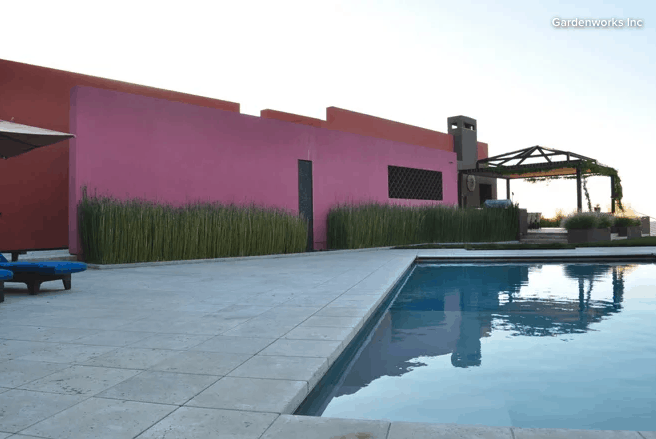It’s not granite, and it’s not marble, so… what is it? Travertine often takes a back seat to Marble, Granite, and Quartzite. It is just as beautiful, unique and durable as its natural stone counterparts. Lets take a deeper look.
Defined by Dictionary.com, Travertine is a, “white or light-colored calcareous rock deposited from mineral springs, used in building”. From the limestone family, it is known for its cavities and warm, earthly colors such as cream, beige, and “greige” or gray beige.

When using Travertine for your countertops, their unique cavities are often filled during finishing. Typical finishes are honed and polished. The honed finish gives it a natural and organic look while polishing can give it a glass-like appearance. This versatile stone is also offered in both full slabs and tiles, making it diverse and perfect for any project.
Pros
It’s natural, neutral, and relaxed texture give them the ability to look good in any home.
Immense durability makes them perfect for any kitchen, indoor or outdoor. Travertine is known for putting up with intense hot and cold. This durability also speaks to its ability to resist scratches and cracks. It can be bought in tile or slabs which means it is versatile. This makes it perfect for countertops, backsplash, floor tile, fireplace mantels, showers, etc.
Cost

This depends on complexity of project, type, tile vs. slab, application costs, cross cuts vs. vein cuts, etc. Travertine is on the lower end of price in comparison to marble and granite.
Cons
Similarly to that of marble, travertine is reactive to acidic solvents so it requires diligent maintenance and periodic sealing.
Learn more about where travertine is quarried and where it is found here.
Travertine can fit in any home, match up to the qualities of other natural stone, and is versatile. This makes us want to showcase this beautiful stone to assure it is being considered. If you are interested in adding Travertine to your home, contact us.




